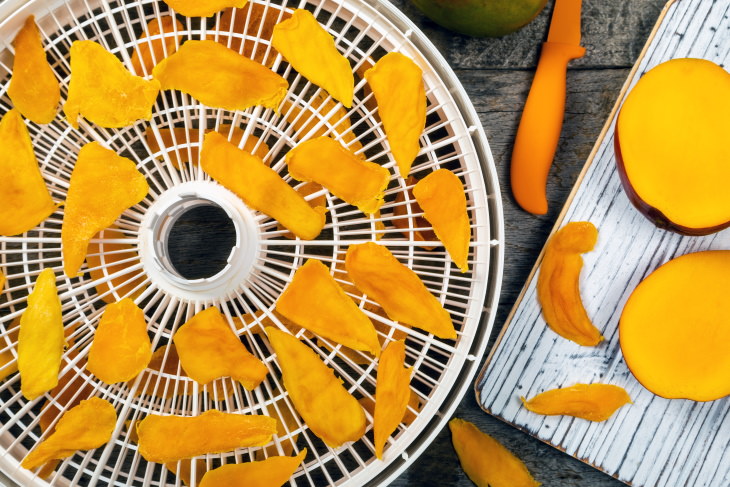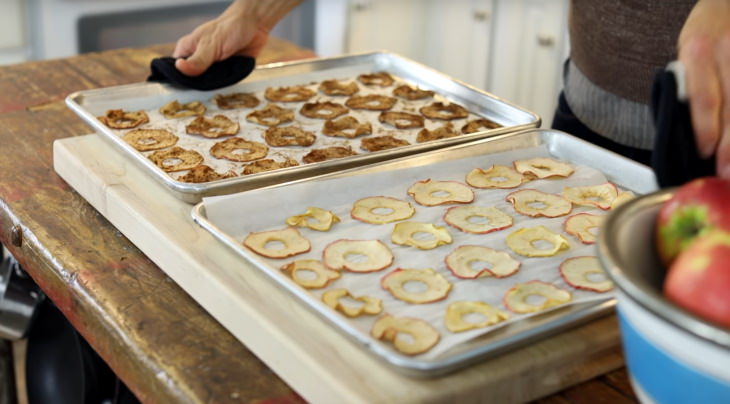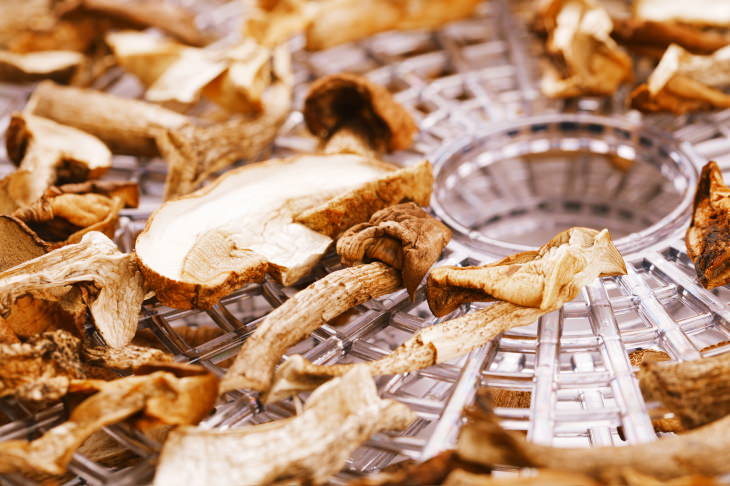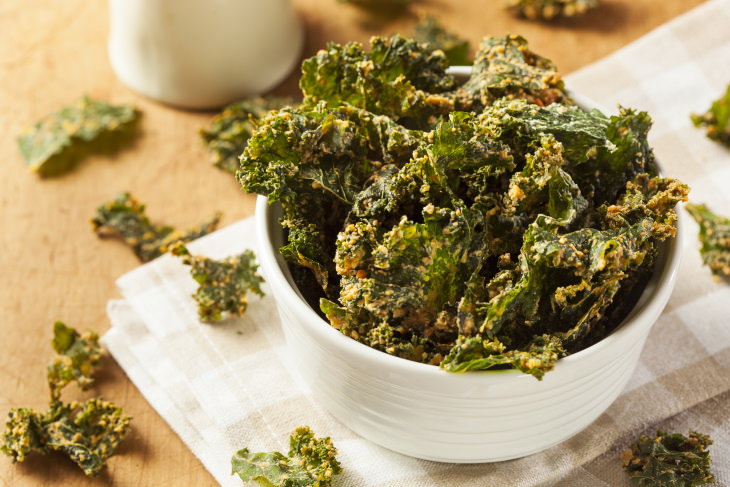Healthy snacking on the go is one of the toughest nutrition goals, as the majority of affordable snacks available in stores are packed with added sugar and salt and often fried - hence, most are not even remotely healthy. Sure, there are healthier choices available, but those are typically overpriced. The solution? We suggest dehydrated foods, which are not just easy to carry around in your bag but are endlessly customizable and always healthy.
What Are Dehydrated Foods?
- Herbs to make your own dried herb and spice mixes or herbal tea.
- Mushrooms, perfect to add to soups.
- Vegetables, making veggie chips, sun-dried tomatoes, etc.
- Fruit, e.g. apple or mango chips, craisins, fruit leather.
- Meat, chicken, and fish to yield homemade jerky.
- Oats, nuts, and seeds, to make homemade granola.
- Bread that you can use as croutons and recipes that call for breadcrumbs.
You can also make an abundance of homemade goods by dehydrating them, such as potpourri and healthy treats for pets, just to name a few. If stored properly in a sealed container, dehydrated foods can last for months! Unlike store-bought dried foods, the ones you will prepare at home are endlessly customizable, free of preservative and added sugar or salt-free, as well as much cheaper. We will discuss how to dehydrate foods at home below.
How to Dehydrate Foods at Home
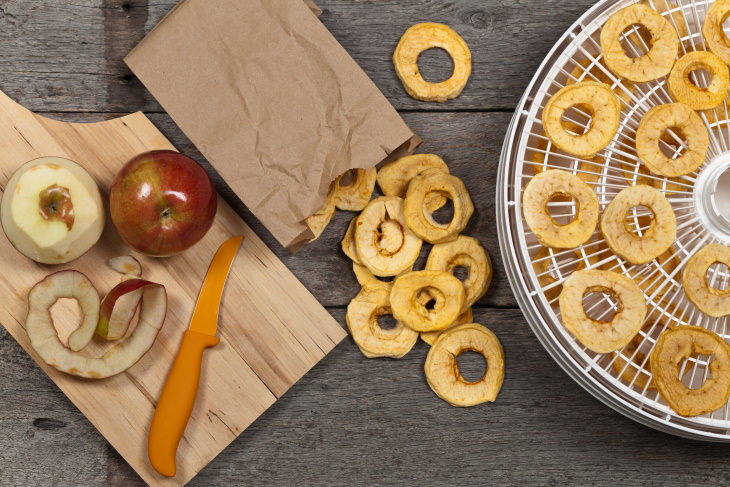
1. Dehydrator
- They’re easy to use, as all you have to do is push a button and let the machine work without your supervision.
- You can dehydrate a variety of foods at a time.
- The dehydrator uses low temperatures, which help preserve the nutrients in the food.
To dehydrate food using a dehydrator, simply prep the foods by peeling and slicing them up, spread them evenly on the shelves of the device, and then turn on the dehydrator, selecting the intended setting. Once the dehydrator stops working, let the food cool off, remove the food from the shelves and put the food items in containers.
2. Oven
The main advantage of dehydrating foods in your oven is, of course, the fact that you don't need to buy any new appliances. This method is also the fastest, although it might be less capable of preserving the nutrients in foods, as the lowest oven temperature is still relatively high compared to dehydrators you can purchase or fashion yourself.
To dehydrate foods in the oven, simply set your oven to the lowest possible temperature (usually around 175°F/ 80°C) and make sure the oven fan is turned on. Spread the thinly sliced foods onto the baking sheets lined with paper, and check up on them every half an hour to make sure they don't burn or harden too much. Every food type will take a different amount of time to prepare - with meats typically taking several hours while berries and other fruit being ready in a much shorter time.
3. DIY Dehydrator
To fashion a DIY dehydrator of your own you'll need a box fan, dehydrator sheets, and clean air conditioner filters. Unplug the fan and set it on the ground with the airflow directed upwards. Prop up on side of the fan 10-15 cm (4-6 in) and put an AC filter on top. Spread the thinly sliced foods on a dehydrator sheet and put an additional dehydrator sheet followed by another filter on top. You can sandwich several layers of food in this fashion, securing them with bungee cords.
Since this method doesn't require any heat, the food will take the longest to be dried out, with most foods taking 2-3 days to be ready.
Homemade Dehydrated Food Recipes
1. Fruit Leather Recipe - a healthy sweet treat
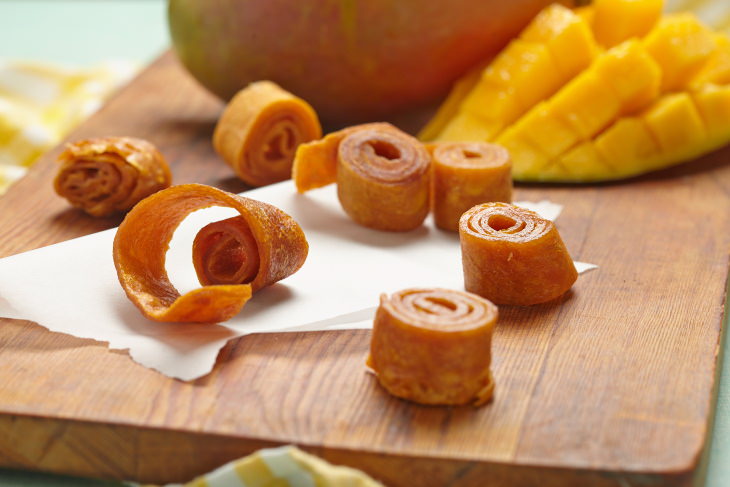
½ cup strawberries*
1 cup applesauce
2. Mushroom Jerky Recipe - the healthier version of jerky
Ingredients:
4 medium Portobello mushrooms, sliced into thin strips
1 tbsp olive oil
½ cup barbecue sauce
1 tbsp apple cider vinegar
Salt to taste
Preparation:
1. In a medium dish, mix all ingredients apart from the mushrooms.
2. Add in mushrooms and coat evenly in the marinade. Let them sit in the marinade for 1-2 hours or overnight.
3. Before dehydrating, shake each piece over the bowl to remove excess moisture. Then dehydrate, 2-3 hours in the oven at minimum temperature, or 4-5 hours at 145°F (62°C) in a dehydrator. The mushroom should be dry but also remain a bit chewy.
3. Kale Chips - the most nutritious 15-minute snack ever
1 tbsp olive oil
Salt, pepper, and any additional seasoning of your choice to taste
4. Beef Jerky - the classic on the go snack
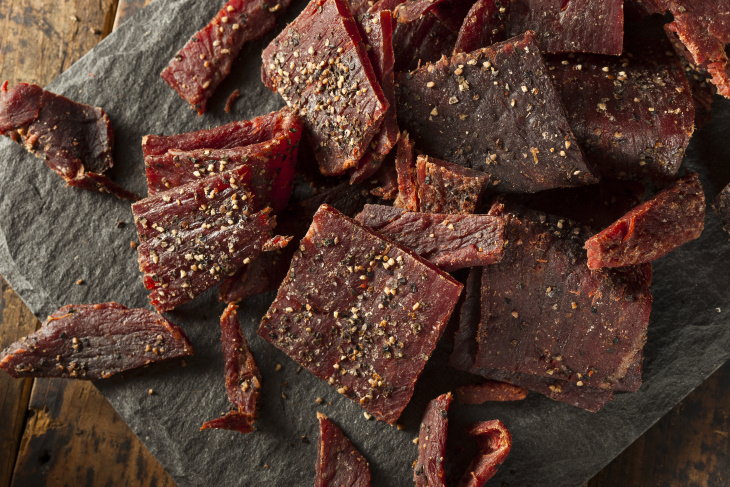
1/4 cup soy sauce
2 tbsp sugar
Salt and pepper to taste
1/4 tsp onion powder
1/2 tsp garlic powder
